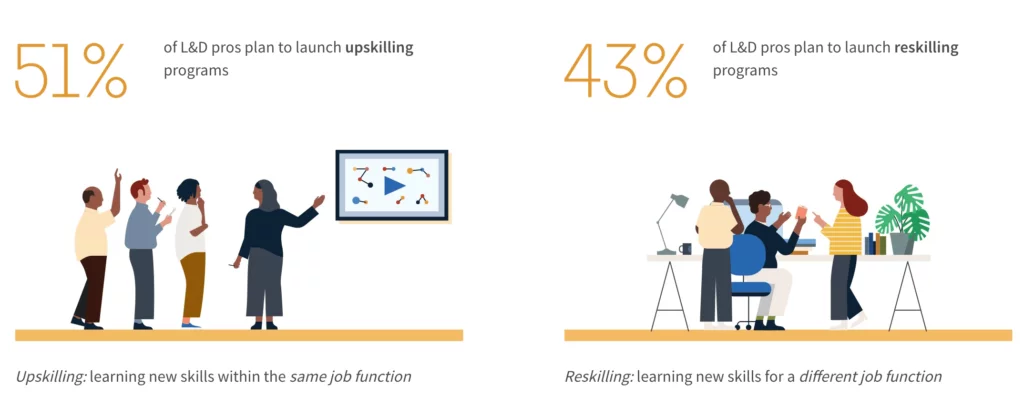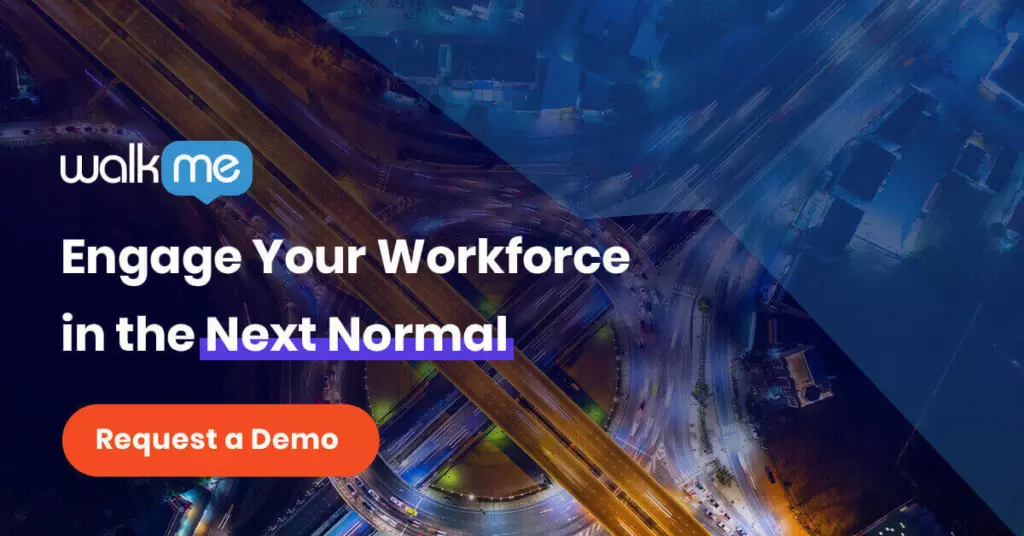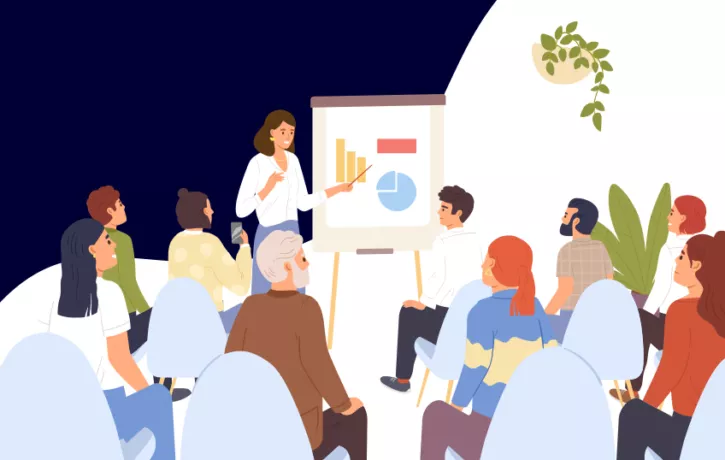Steve Jobs built Apple’s empire on going after “the cream of the cream.” In today’s cutthroat war for talent, Jobs understood: “A small team of A+ players can run circles around a giant team of B and C players.”
To retain high-performers, it’s imperative to invest in employee development programs.
As businesses face record-high worldwide talent shortages the leaders who reskill and upskill their workforce — and value individual employee’s needs — are the ones who will safeguard retention.
Align individual and organizational needs
When your employees feel their individual needs align with their organization’s long-term business vision, they will see opportunity to grow — and companies retain and cultivate top talent.
According to the Work Institute, career development continues to be the leading cause of employee turnover in the U.S. with a lack of growth and development opportunities cited as a trend with a 170% increase since 2010.

Credit: Work Institute
STRATEGY: Companies need to be transparent about their needs and vision and take it a step further. Current skills and existing roles along with the future needs of the company have to be consistently evaluated on a quarterly basis. Management needs to communicate the quarterly results to department heads and managers. Once this information is in the hands of direct managers, they can use the results as the basis for creating robust employee development plans that not only complement employees but fit the dynamic needs of the organization.
Optimized on-the-job training
In an era of constant innovation and change, today’s employees seek meaningful and consistent learning opportunities in the workplace.
LinkedIn’s 2020 Workplace Learning Report found that 83% of learning & development professionals say their executives support employee learning. But only 27% say their CEOs are active champions of learning.
Digital workspaces are moving away from offsite seminars and knowledge-crammed lectures, especially in the climate of remote working.
Reskilling and upskilling are more commonplace as organizations are finding that it’s more cost-effective to train existing employees for another position within the company and/or enhance their current skillset to better perform their job.

Employees require flexible ongoing training solutions to best retain new knowledge.
STRATEGY: To drive learning retention, embed a contextual learning solutions into your employee development model. With contextual assistance, a digital next-generation tool sits on software, analyzing employee actions.
These training tools use algorithms to interpret context-sensitive elements: even a hire’s role within your organization and departmental goals.
Use technology to predict and meet individual employee needs — and break free of the limitations of a one-size-fits-all training plan.
To empower your staff with the essential skills to develop their career potential — and grow your bottom line — it’s beneficial to design personalized on-the-job-training programs.
Track and optimize your development training methods
To know if employee development programs are thriving or floundering, it’s imperative to create open feedback loops. Set milestones for your workers to evaluate their success with clear KPIs that are realistic and measurable. Measuring employee performance and growth gives managers the opportunity to incentivize and constantly improve.
STRATEGY: Regular check-ins complete with clear goals and deliverables will make employees feel seen and unheard. It also sets the stage for understanding changing priorities, motivations, or pain points.

Build a foundation for employees to excel
Business consultant Marcus Buckingham notes, “Talent is the multiplier. The more energy and attention you invest in it, the greater the yield.”
When you build and invest in employee talent, you increase job satisfaction at work. Employees are motivated and feel that they have a place to grow and develop. This complements the overall functionality of the organization creating a more productive and collaborative work environment for all.


